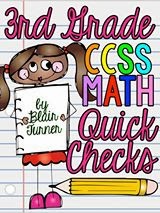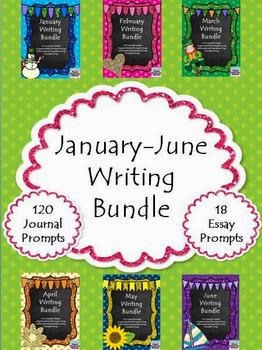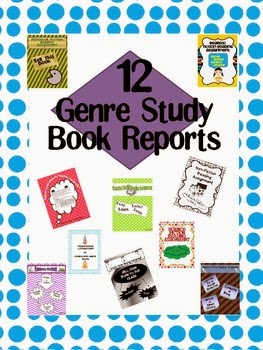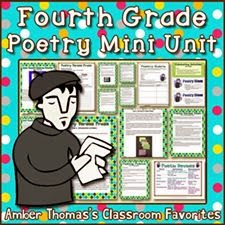Oh, the testing season is almost upon us…funny, I am not quite as excited for this season as I am for Halloween, Thanksgiving, or Christmas. Just call me the Grinch of Testing, I guess. I thought about writing about an instructional strategy or project, but, with testing creeping up on us, I would imagine many of us are entering review and prep mode. So I thought I would write a post about something you could use during the dreaded "T" word.
I get just as bored as my students with testing, and I know my brain doesn't hurt nearly as much as theirs do after a couple of hours of non-stop testing. I am sure you are like me in that after the test is done, you give the kiddos a little bit of time to relax before diving into a review of material that will be on the following day's test. I don't want to spend a lot of time planning these brain breaks, nor do I want to spend my limited amount of copies copying pages for them to do (even if they are fun pages because they just spent hours using paper and pencil), but I also want my students to be engaged enough where they are quiet because you know if the classroom next door isn't finished, you.can't.make.a.peep.
I let my kiddos read books, bring their devices in so they can play games, or take them out for extra recess. Then, one day, and I don't really know how or why, the idea of having my students solve and make rebuses popped into my head. Maybe it was because I was thinking about how older game shows such as "Name That Tune" and "Concentration" are just more entertaining than game shows today (except for "The Amazing Race"....which isn't really a game show….….I really loved "Concentration"!)
What is a rebus, you ask? A rebus is a puzzle that uses representations for a word, parts of a word, or sounds within a word. Then you put together all the representations for the complete word, phrase, or sentence. Some rebuses are purely words. I like the ones that use pictures.
Here is an example of a rebus that uses pictorial representations. The top row is a more simple rebus. The bottom row is a little harder.
Can you figure these out? Both are book characters :) **Answers are at the bottom of this post**
My kids LOVED them! I found harder ones and easier ones on-line, and I just printed them out, or I displayed them on our smart board for students to solve. When I felt creative and wanted to use all the CUTE clip art I buy from the talented clip artists on Teachers Pay Teachers, I made my own like the above examples! After they had solved several of them, I then gave my students magazines and had them create their own. They would cut out pictures from the magazine and glue them down, drawing arrows, plus or minus symbols, or whatever else they needed to add. If you had clip art that was accessible to students, you could also let them use that. I also gave my kids a theme such as their favorite book characters (which is why I made the examples above), favorite sports teams, or favorite movie to help them with getting started, and to make it easier when they swapped and solved each others, but you could totally have make whatever they want, too. You can put as much or as little time into preparing these. If you have time, make them for students to solve. If you don't, have them make their own instead :) I also use rebuses as part of a review center sometimes, too, and sometimes as an activator for a lesson. The possibilities are endless!
I love rebuses. In fact I love them so much, I actually used them in a training I did a few years ago to keep the adults engaged. Every few slides I had a rebus that was related to the topic, and the person who answered it correctly got some candy, soda (OK, not the healthiest, but it's what they wanted), or some other door prize.
Have you used rebuses before? Think you might give them a try? Leave a comment with how you might give them a try or how you have used them in the past. I'd love to hear from you! :)
Until next time!
I get just as bored as my students with testing, and I know my brain doesn't hurt nearly as much as theirs do after a couple of hours of non-stop testing. I am sure you are like me in that after the test is done, you give the kiddos a little bit of time to relax before diving into a review of material that will be on the following day's test. I don't want to spend a lot of time planning these brain breaks, nor do I want to spend my limited amount of copies copying pages for them to do (even if they are fun pages because they just spent hours using paper and pencil), but I also want my students to be engaged enough where they are quiet because you know if the classroom next door isn't finished, you.can't.make.a.peep.
I let my kiddos read books, bring their devices in so they can play games, or take them out for extra recess. Then, one day, and I don't really know how or why, the idea of having my students solve and make rebuses popped into my head. Maybe it was because I was thinking about how older game shows such as "Name That Tune" and "Concentration" are just more entertaining than game shows today (except for "The Amazing Race"....which isn't really a game show….….I really loved "Concentration"!)
What is a rebus, you ask? A rebus is a puzzle that uses representations for a word, parts of a word, or sounds within a word. Then you put together all the representations for the complete word, phrase, or sentence. Some rebuses are purely words. I like the ones that use pictures.
Here is an example of a rebus that uses pictorial representations. The top row is a more simple rebus. The bottom row is a little harder.
Can you figure these out? Both are book characters :) **Answers are at the bottom of this post**
My kids LOVED them! I found harder ones and easier ones on-line, and I just printed them out, or I displayed them on our smart board for students to solve. When I felt creative and wanted to use all the CUTE clip art I buy from the talented clip artists on Teachers Pay Teachers, I made my own like the above examples! After they had solved several of them, I then gave my students magazines and had them create their own. They would cut out pictures from the magazine and glue them down, drawing arrows, plus or minus symbols, or whatever else they needed to add. If you had clip art that was accessible to students, you could also let them use that. I also gave my kids a theme such as their favorite book characters (which is why I made the examples above), favorite sports teams, or favorite movie to help them with getting started, and to make it easier when they swapped and solved each others, but you could totally have make whatever they want, too. You can put as much or as little time into preparing these. If you have time, make them for students to solve. If you don't, have them make their own instead :) I also use rebuses as part of a review center sometimes, too, and sometimes as an activator for a lesson. The possibilities are endless!
I love rebuses. In fact I love them so much, I actually used them in a training I did a few years ago to keep the adults engaged. Every few slides I had a rebus that was related to the topic, and the person who answered it correctly got some candy, soda (OK, not the healthiest, but it's what they wanted), or some other door prize.
Have you used rebuses before? Think you might give them a try? Leave a comment with how you might give them a try or how you have used them in the past. I'd love to hear from you! :)
Until next time!
Heather
2 Brainy Apples
**Answers to the rebuses
top row- Rainbow Fish
bottom row- Harry Potter (the arrow is pointing to the girls' HAIR, then add BEE minus the B to get EE which makes HAIREE = HARRY; Then add POT to FUR since the arrow is pointing to the koala's fur minus the F to get UR which makes POTUR = Potter; Viola! Harry Potter!)
top row- Rainbow Fish
bottom row- Harry Potter (the arrow is pointing to the girls' HAIR, then add BEE minus the B to get EE which makes HAIREE = HARRY; Then add POT to FUR since the arrow is pointing to the koala's fur minus the F to get UR which makes POTUR = Potter; Viola! Harry Potter!)




















.jpg)
.jpg)
.jpg)






















